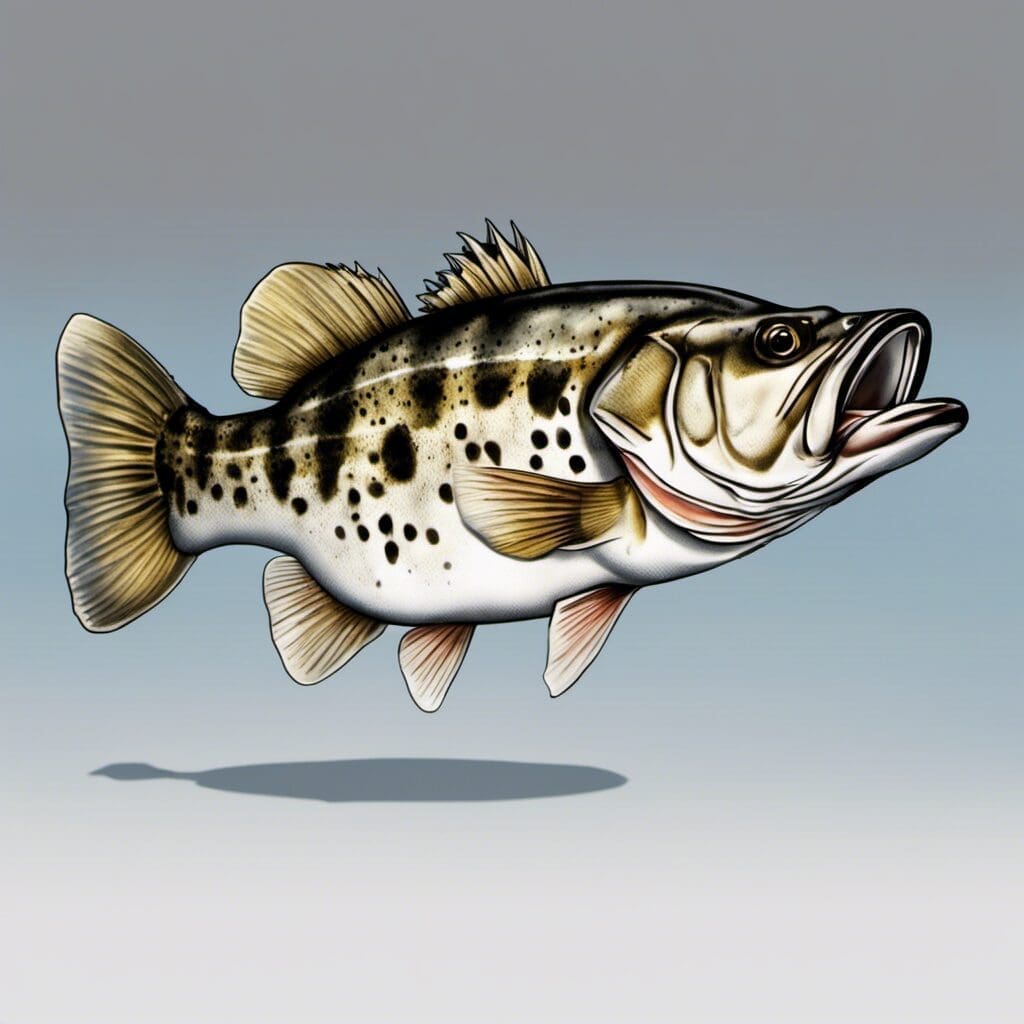Introduction
The Spotted Bass (Micropterus punctulatus) is a member of the Sunfish (Centrarchidae) family.
Conservation Status
The Spotted Bass enjoys a conservation status of “Least Concern”, mainly due to its widespread distribution and population numbers. However, active initiatives are in place to monitor population trends and protect their habitats from ill-effects of pollution and urbanization.
Statistics
| Average | Range | |
|---|---|---|
| Length | 10-20 inches | 4-25 inches |
| Weight | 1-3 lbs | 0.5-9.9 lbs |
| Average Lifespan | 7 years |
Distribution
Spotted Bass are native to the central United States, being primarily found in regions from Texas to the Florida panhandle, and north to Illinois. They prefer slow-moving streams and reservoirs with clear water.
Habitats
- Water Type: Freshwater
- Depth Range: Shallow to medium
- Temperature Range: Cool to warm waters
When and Where to See
They are largely active in spring and summer months, particularly in the early morning and late evening when the water is coolest.
Best Fishing Locations
- Lake Lanier, Georgia
- Table Rock Lake, Missouri
- Clear Lake, California
- Cumberland River, Kentucky
- Lake Norman, North Carolina
- Lake Texoma, Texas
- Lake Eufaula, Alabama
- Beaver Lake, Arkansas
- Lake Murray, South Carolina
- Lake Guntersville, Alabama
General Tips
Look for rocky areas near deeper water. These bass are ambush predators, using rocks, fallen trees, and vegetation as cover.
How to Catch
The preferred bait for Spotted Bass includes live shad and crawfish, as well as artificial lures like crankbaits, swimbaits, and jigs. Techniques such as drop-shotting, jerk baiting, or fishing with light spinning tackle often yield good results, particularly in the early morning or late evening.
Identification Guide
Spotted Bass are generally green with dark mottling, a lighter belly, and rows of dark spots running lengthwise on their bodies. They can be distinguished from similar species by the rough patch of teeth found on the back of their tongues.
Culinary
How to Cook
While not highly sought after for their culinary value compared to other bass, they can be pan-fried, grilled, or baked with light seasonings.
Taste Profile
Their flesh is mild with a slightly sweet flavor and a firm but flaky texture.
Nutritional Information
Spotted Bass is a good source of lean protein and also provides healthy amounts of Omega-3 fatty acids, Vitamin D, and Potassium.
Additional Information
Behavior
Spotted Bass tend to be solitary creatures, often hiding among rocks or fallen trees while they wait for prey. They feed on smaller fish, crustaceans, and insects.
Predators and Threats
Spotted Bass face threats from larger predatory fish including Largemouth Bass, Northern Pike, and walleye. They are also highly sought after by game fishers.
Cultural/ Historical Significance
A highly popular target for anglers, Spotted Bass hold a significant place in the sport fishing culture of the United States.
References and Further Reading
For more comprehensive information, consider researching primary academic resources, guides, and books written by recognized authorities on freshwater fish and sport fishing such as “Freshwater Fish of North America” by Peter Thompson, and “Bass Fishing Techniques, Tactics, and Tales by the Masters” by Scott Canterbury.

